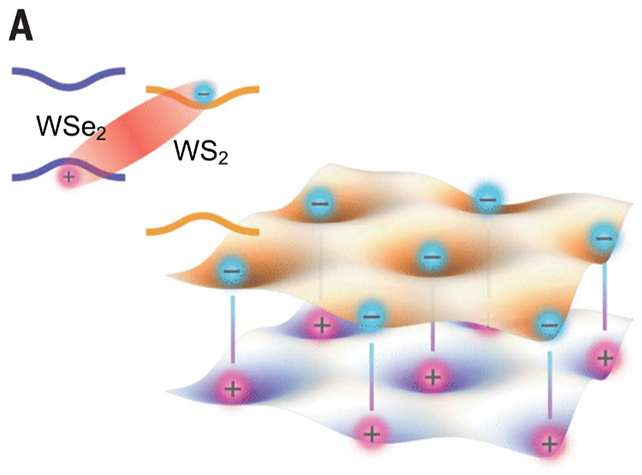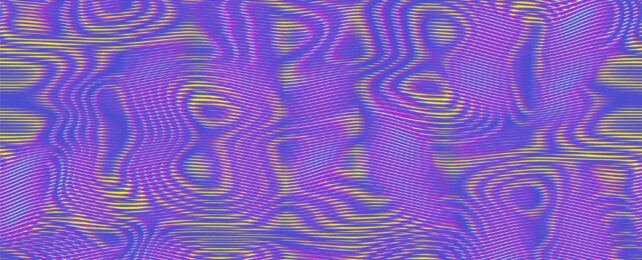Scientists are always looking for the next weird and wonderful material, and they've just found it: A bosonic correlated insulator to give it its technical name, which is both a new material and, indeed, a whole new state of matter.
It's a lattice formed from a layer of tungsten diselenide and a layer of tungsten disulfide placed on top of each other but not fully aligned.
That slight misalignment creates what's known as a moiré pattern, and here has revealed some interesting properties.

To understand what's special about the material, you need to understand what bosons and fermions are. At the quantum level, particles are grouped into two main types: bosons (force carriers like photons) that can share the same quantum state, and fermions (matter particles like electrons), which can't. Usually, fermions are easier to work with.
"Conventionally, people have spent most of their efforts to understand what happens when you put many fermions together," says condensed matter physicist Chenhao Jin from the University of California, Santa Barbara (UCSB).
"The main thrust of our work is that we basically made a new material out of interacting bosons."
Fermions also have half-integer quantum spins (e.g., ½, 3/2, 5/2), unlike the full-integer (any whole number) spins of bosons, and this is where it gets even more interesting.
Two fermions – a negatively charged electron and a positively charged opposite 'hole' where an electron could be – can also bind to form an exciton with a full integer spin, which then is also able to function as a boson particle.
Using a light-based technique called pump-probe spectroscopy, the researchers created and probed the behaviors of the excitons in their system – the electrons from the tungsten disulfide and the 'holes' from the tungsten diselenide.

Scientists observed the excitons reaching a certain density, driven by strong interactions, and becoming unable to move. This immobility led to a crystalline state that acted as an insulator, a specific material, and a state that hadn't been seen before.
"What happened here is that we discovered the correlation that drove the bosons into a highly ordered state," says physicist Richen Xiong, from UCSB
The team thinks their approach could lead to the discovery of more bosonic materials further down the line, and an improved way for all scientists to study bosons in real scenarios rather than in synthetic systems.
If a newly discovered material isn't going to find an instant, practical use, you might think it's not that important – but these exotic new creations help scientists understand how the Universe around us is put together.
While excitons have been well studied in the past, what's noteworthy here is the strong reactions they had with each other and the resulting properties – created by the moiré pattern lattice and pump-probe spectroscopy.
"We know that some materials have very bizarre properties," says Xiong. "And one goal of condensed matter physics is to understand why they have these rich properties and find ways to make these behaviors come out more reliably."
The research has been published in Science.
